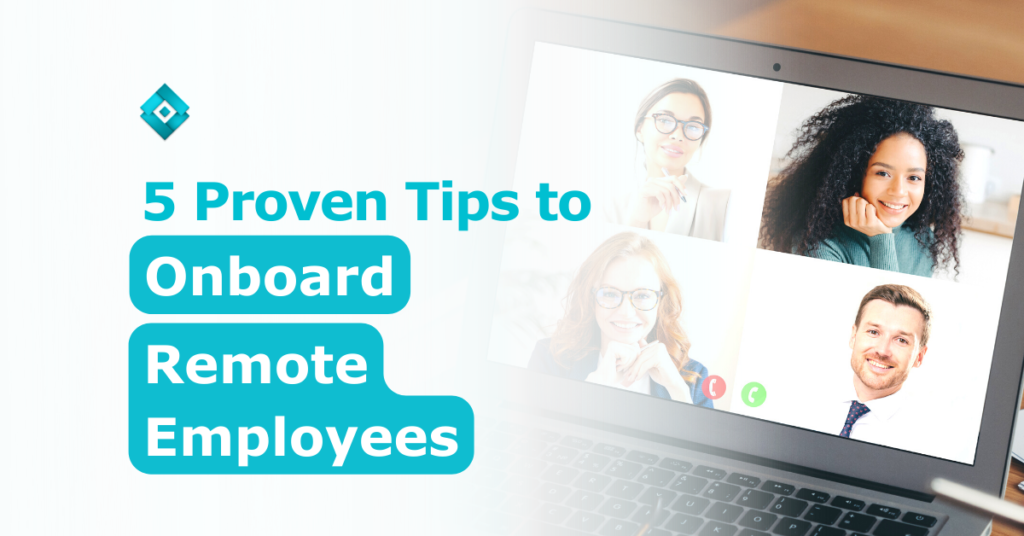As a growing business, it is crucial to effectively onboard remote employees. Onboarding is the process of integrating a new employee into the company. It includes orienting the new hire to the company culture, values, and policies. It can also involve providing training on the company’s products or services.
Onboarding is the process of integrating a new employee into the company. It includes orienting the new hire to the company culture, values, and policies. It can also involve providing training on the company’s products or services.
When a new employee starts at a company, it’s essential for them to feel like they are a part of the team and that their skills will be utilized effectively. The onboarding process helps to accomplish this by orienting the new hire to the company culture and expectations. It can also help ensure that the new hire has the necessary tools and resources to be successful in their role.
An effective onboarding process can help reduce turnover and improve job satisfaction. Effective onboarding methods lead to 2.5% revenue growth and a 1.9% increase in the profit margin. It has also been shown to improve productivity and performance. Therefore, it’s clear that onboarding is an essential part of any business’s success. By taking the time to onboard new hires effectively, companies can set them up for success from day one.
Challenges with remote onboarding
There are a few key challenges when you want to onboard remote employees. First, getting everyone on the same page virtually can be difficult. You might have team members in different time zones or experience levels with the relevant technology. This can make it tough to coordinate everyone and ensure everyone gets the same information. Additionally, remote onboarding can be less personal than in-person onboarding. Building rapport and relationships are more complicated when you’re not physically present with someone. And finally, there’s always the risk of technical difficulties when relying on technology for onboarding. Whether audio or video issues or simply trouble to access the materials you need, tech problems can derail the entire process.
Despite these challenges, remote onboarding can be successful with careful planning and execution. You can set your team up for success by following the tips below.
1. Prepare your “blueprint” for the onboarding process.
Your plan to onboard remote employees is crucial for setting new hires up for success. By preparing a well-thought-out plan, you can ensure that your new employee feels welcome, comfortable, and confident in their new role. Here are a few tips to help you create an effective onboarding plan:
a. Start by creating a timeline of activities and milestones that need to be completed during the first few weeks on the job. This will help you keep track of progress and ensure that all essential tasks are completed.
b. Make sure to include both formal and informal activities in your plan. Formal activities might consist of attending training sessions or meetings with department managers. Informal activities could include something as simple as taking breaks or going for lunch with coworkers.
c. Be sure to allow for some flexibility in your plan. New hires may want to move at a different pace than you anticipated, or they may have questions you didn’t expect. By being flexible, you can make sure that everyone feels comfortable with the onboarding process.
By taking the time to prepare an onboarding plan, you can set your new hire up for success from their first day on the job. With some planning and flexibility, you can ensure that everyone has a positive experience during the onboarding process.
2. Be creative with connecting online.
While there are many vital facets in order to onboard remote employees, one of the most crucial is creating a connection between the new hire and their team. In the past, this may have been done through in-person meetings and social outings. However, in today’s climate, we must get creative in forming these connections.
One way to do this is to utilize video conferencing tools such as Zoom or Google Hangouts. These platforms can be used for virtual team meetings, one-on-one check-ins, and even social events such as happy hours or virtual game nights. Another way to create connections is through online team-building exercises. There are a variety of websites and apps that offer fun and engaging activities that can help people get to know each other better. With virtual tools, we can ensure they feel welcome, comfortable, and part of the team from day one.
3. Equip them with the right tools.
If you’re looking to set your employees up for success in a remote work environment, there are a few key things you’ll need to do. First, equip them with the right tools. Ensure they have access to all the software and hardware needed to do their job effectively.
Second, provide them with an essential company kit. This includes an employee handbook, accounts and passwords needed for remote work, policies and procedures related to working remotely, and other important employment documents. By taking these steps to onboard remote employees, you’ll ensure that your employees have everything they need to be successful in a remote work environment.
4. Set goals and expectations at the outset.
To effectively onboard remote employees, it is important to set clear goals and expectations from the outset. This will help the new employee understand what is expected of them and provide a framework for their learning and development. By clearly articulating the company’s expectations, you can help the new hire hit the ground running and become a productive team member more quickly.
5. Schedule regular check-ins
Once a new hire has been brought on board, it is important to provide them with the support they need to adjust to their new job. One way to do this is to schedule regular check-ins with the new employee. This allows them to ask questions, express any concerns, and get feedback on their performance. Additionally, it will enable managers to assess how well the new hire is adapting to their role and make any necessary adjustments to the onboarding process.
Before onboarding, where do you find the one to hire?
Prior to planning how to onboard remote employees, you first need to hire the right people. The right people are those not only equipped with the right skills but also committed to seeing your company succeed. With CORE VAs, you don’t need to have difficulty onboarding, as we will handle that for you. We ensure that you’ll achieve more while doing less!
Talk to our industry experts to meet the right VAs for you!
Read more: 5 Business Statistics Why You Need a VA this 2022









What’s up, I read your new stuff daily. Your story-telling style is witty, keep it
up!